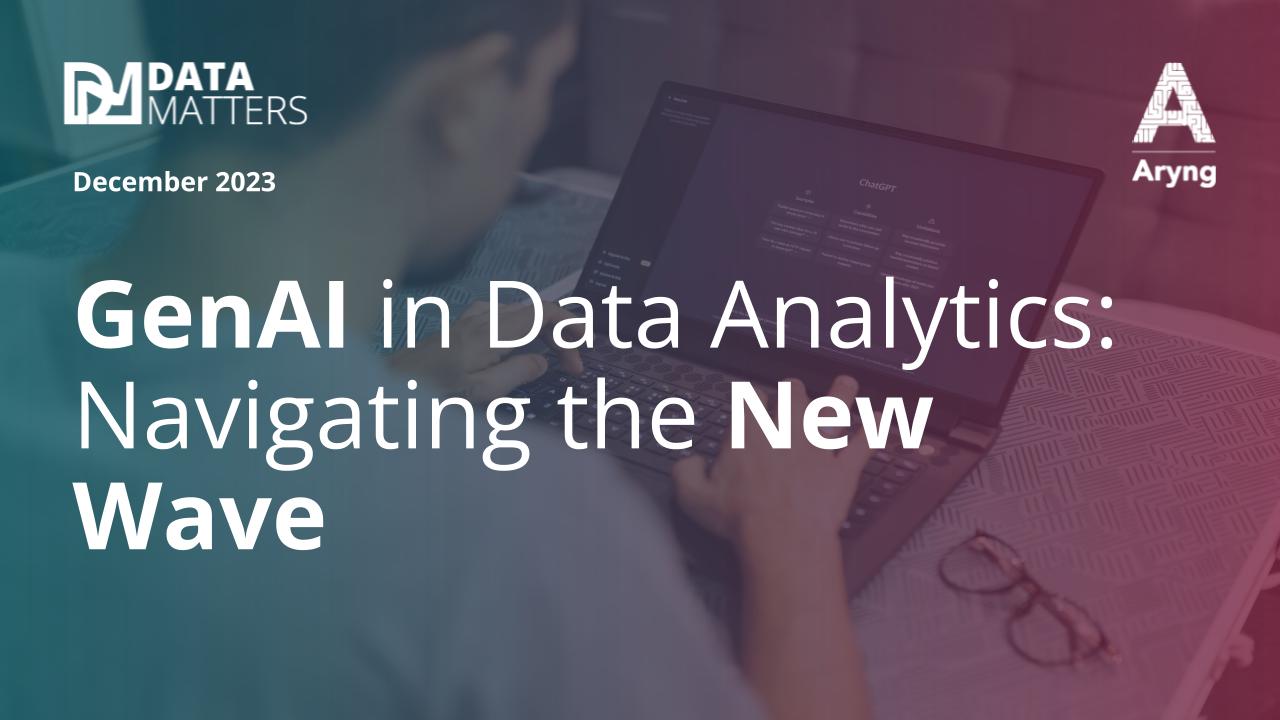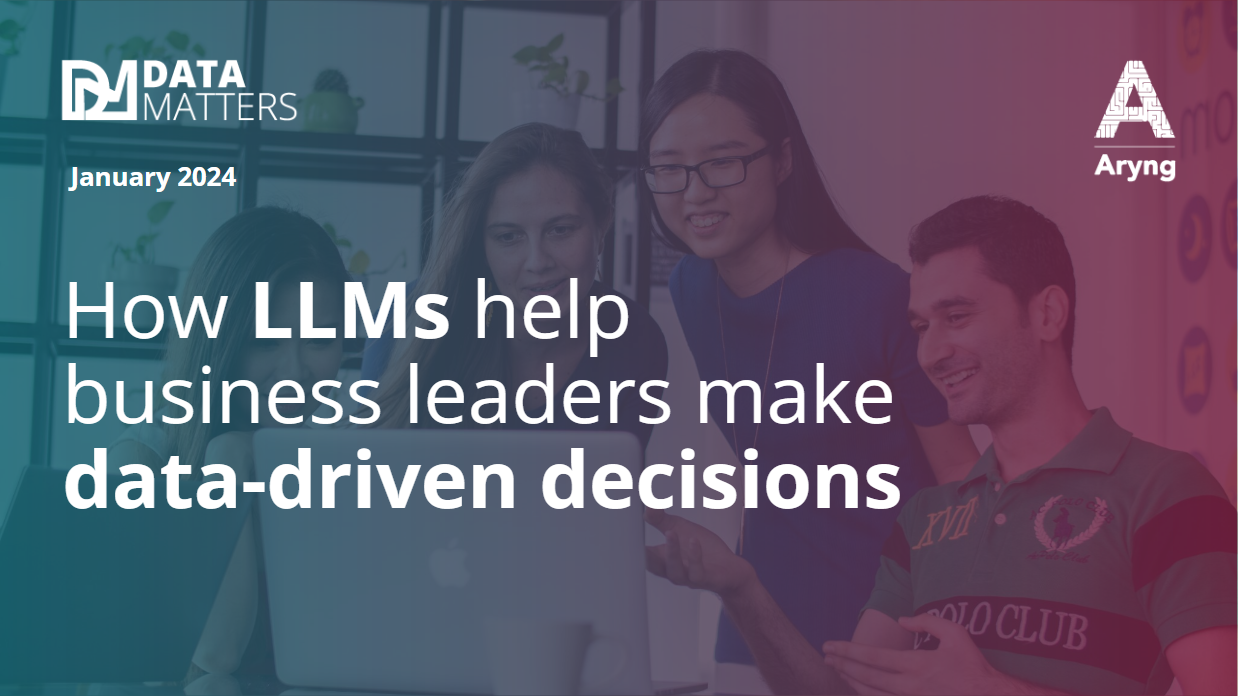
In the whirlwind following the 2023 release of ChatGPT 4.0, the landscape of data analytics has been reshaped. For those feeling a step behind in this fast-paced evolution, this recap of the year’s highlights offers a practical guide to the most accessible and impactful applications of Generative AI (GenAI).
The Need for Change in Our Tech Habits
Our current habits, deeply rooted in decades of technological advancement, are due for a significant shift. We’ve become accustomed to a world where software performs tasks based on precise instructions. Tools like Excel executes formulas, Python automates tests, and Word predicts text as we type. This programming-centric approach ushered in the era of software-as-a-service, boosting productivity and reducing human error. However, the advent of GenAI challenges this mindset, demanding a new approach to how we interact with technology and the data it supplies.
Training and Adaptation in the Era of Rapid Tech Evolution
Historically, change management in technology has heavily relied on extensive training. Reflecting on my experience in developing skill and learning paths for agile software engineering teams, I recall encountering data that underscored the need for continuous learning. A notable perspective from Siemens – a leader in innovation and technological advancement – aptly captures this sentiment. They observed that over 70% of the technology we use today was developed in the last five years, with a significant portion potentially being replaced in the next three years. This statement underscores the fluid nature of technology and the necessity for adaptability in our approach.
Key Takeaways:
GenAI as an Augmentation Tool: The big opportunity with GenAI is to augment human capabilities, not just automate tasks. Tools like ChatGPT will transform how we work by fostering collaboration rather than merely executing programmed commands. The immediate impact of this collaboration will be most pronounced for people whose relative performance is lower.
Conversational Collaboration: GenAI’s rapid development trajectory suggests that we will soon transition from typing prompts to engaging in voice-activated dialogues with AI tools. This evolution underscores the need for human skills around critical thinking and less about our understanding of a tools interface. To do this well, we need to have a clear understanding of the business problem and context.
Leadership and Direction: In this emerging GenAI landscape, the role of leaders becomes even more crucial. We are tasked with setting clear directions, providing resources, and establishing guidelines to facilitate small-scale experiments with GenAI. Until the level of risk is understood, leaders need to set the appropriate guardrails on what data can be used and how it is used.
Looking Ahead:
Embrace Discomfort: The transition to working with GenAI requires a shift from our entrenched habits. The key lies in practical, hands-on experimentation, supplemented by targeted training. It’s a journey out of the comfort zone, demanding continuous adaptation and learning.
Critical Thinking and Decision-Making: While GenAI can mimic human-like responses, it cannot replace critical thinking and decision-making. These are uniquely human. It is estimated that 70% of an organization lacks the level of critical thinking skills needed for GenAI. GenAI does not possess critical thinking. Evaluate your decision-making processes and prepare to change them as you set your GenAI strategy.
Preparing for the Next Wave: With each update in GenAI technology, new functionalities emerge. Staying abreast of these changes and being prepared to integrate them into current workflows is essential for staying ahead.
In Conclusion:
The GenAI Use-Case Summary below highlights automation versus augmentation. These are applicable to any industry or domain. We tried to capture suggestions that are relatively easy to get started.
Data Analytics is applied AI. Therefore, we have organized the use-cases around a data analytics framework called BADIR to give context to each one.
Get used to being uncomfortable! It is the only way we, as humans, know that we are challenging our entrenched habits. Practice is the only way to change that. Make it practical and hands-on, not conceptual. A little training is okay. But train as you experiment with AI.
Although GenAI is designed to give “human-like” responses, it does not replace the human part of work: critical thinking and decision-making, lest we fall asleep at the wheel.
So, dig in now and be ready for the next release of functionality.
| Data Analytics Process Step | Use GenAI to Automate | Use GenAI to Augment |
| Business Case – Establish a clear, focused business problem and align with stakeholders. |
|
|
| Analysis Plan – Collaborate with stakeholders to create a hypothesis driven analysis plan and align on data requirements. |
|
|
| Data Collection – Gather data identified in the analysis plan. Clean and validate quality. |
|
|
| Insights – Prove/disprove hypothesis, analyze data, and generate insights. |
|
|
| Recommendations – Prioritize recommended actions based on impact and ROI. Meet with all stakeholders to align on decisions. |
|
|

Author of the article – Susan Stocker
Sources:
https://www.gartner.com/peer-community/oneminuteinsights/unleashing-power-generative-ai-data-analytics-jjq
https://www.datacamp.com/blog/unique-ways-to-use-ai-in-data-analytics
https://blog.aryng.com/data-science-process-why-should-you-use-badir/
https://www.linkedin.com/pulse/real-time-data-analytics-enhancing-operational-efficiency-goyal-ds3tc%3FtrackingId=d11B%252F1EuQEei4fl4eqEI0A%253D%253D/?trackingId=tol4iN7hRZC4LuOmxK31YQ%3D%3D
https://www.cmu.edu/intelligentbusiness/expertise/genai_business_analytics.pdf
https://decisionpoint.ai/blog/7-ways-genai-will-change-the-data-and-analytics-industry/



